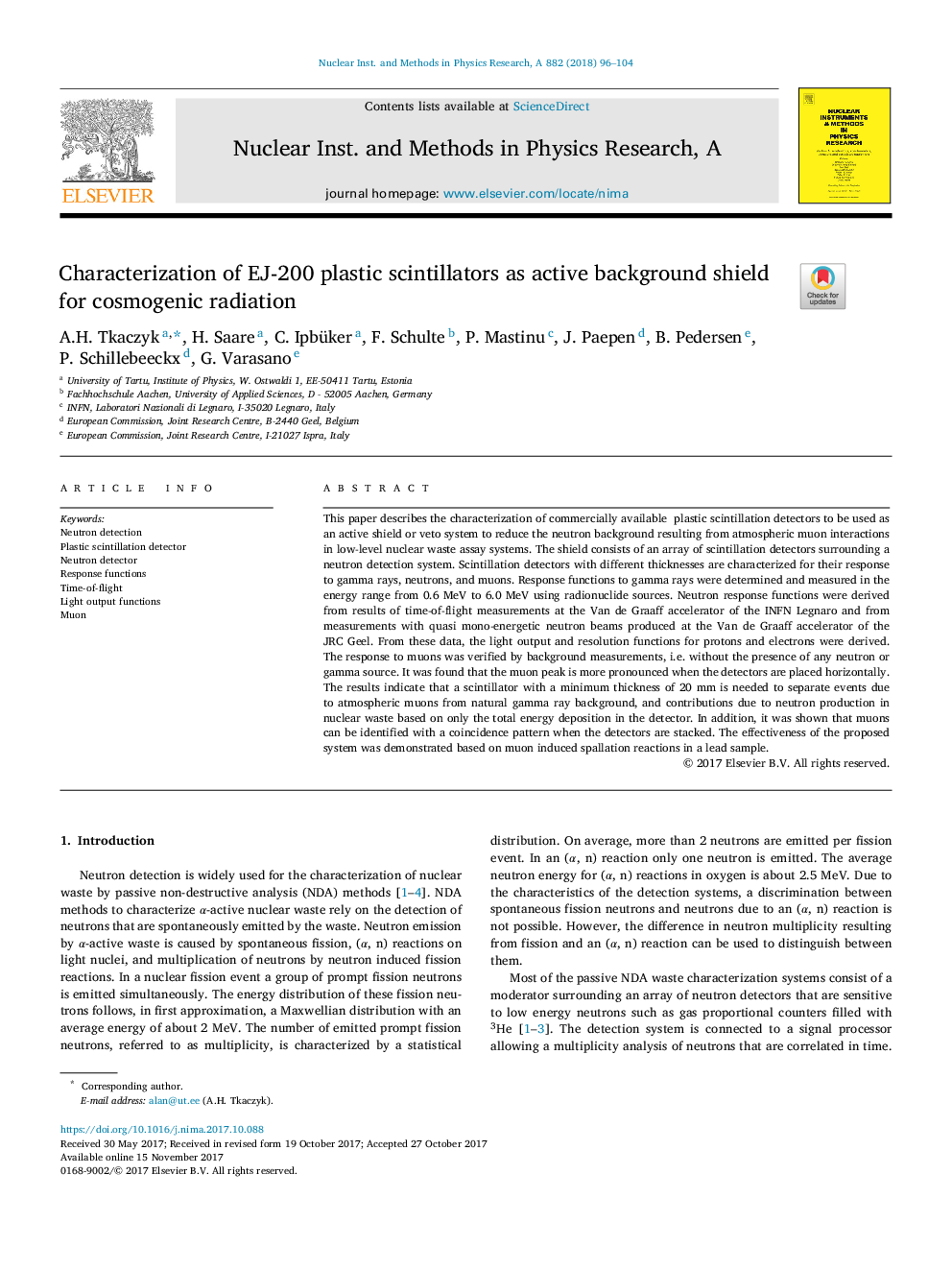| Article ID | Journal | Published Year | Pages | File Type |
|---|---|---|---|---|
| 8167052 | Nuclear Instruments and Methods in Physics Research Section A: Accelerators, Spectrometers, Detectors and Associated Equipment | 2018 | 9 Pages |
Abstract
This paper describes the characterization of commercially available plastic scintillation detectors to be used as an active shield or veto system to reduce the neutron background resulting from atmospheric muon interactions in low-level nuclear waste assay systems. The shield consists of an array of scintillation detectors surrounding a neutron detection system. Scintillation detectors with different thicknesses are characterized for their response to gamma rays, neutrons, and muons. Response functions to gamma rays were determined and measured in the energy range from 0.6 MeV to 6.0 MeV using radionuclide sources. Neutron response functions were derived from results of time-of-flight measurements at the Van de Graaff accelerator of the INFN Legnaro and from measurements with quasi mono-energetic neutron beams produced at the Van de Graaff accelerator of the JRC Geel. From these data, the light output and resolution functions for protons and electrons were derived. The response to muons was verified by background measurements, i.e. without the presence of any neutron or gamma source. It was found that the muon peak is more pronounced when the detectors are placed horizontally. The results indicate that a scintillator with a minimum thickness of 20 mm is needed to separate events due to atmospheric muons from natural gamma ray background, and contributions due to neutron production in nuclear waste based on only the total energy deposition in the detector. In addition, it was shown that muons can be identified with a coincidence pattern when the detectors are stacked. The effectiveness of the proposed system was demonstrated based on muon induced spallation reactions in a lead sample.
Keywords
Related Topics
Physical Sciences and Engineering
Physics and Astronomy
Instrumentation
Authors
A.H. Tkaczyk, H. Saare, C. Ipbüker, F. Schulte, P. Mastinu, J. Paepen, B. Pedersen, P. Schillebeeckx, G. Varasano,
